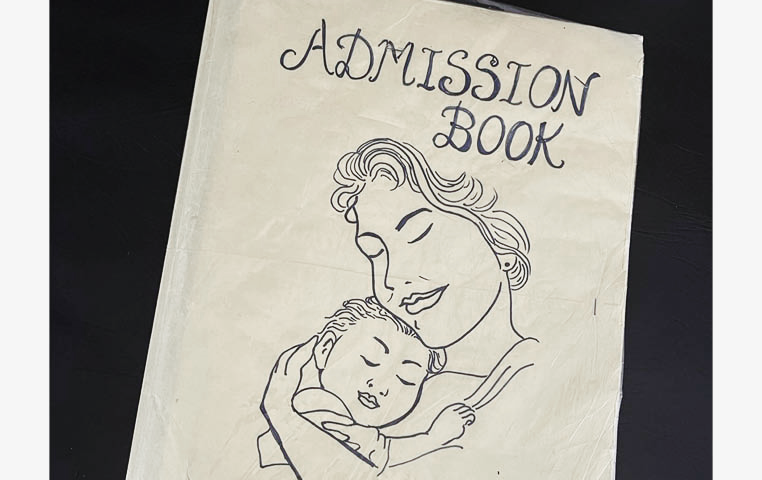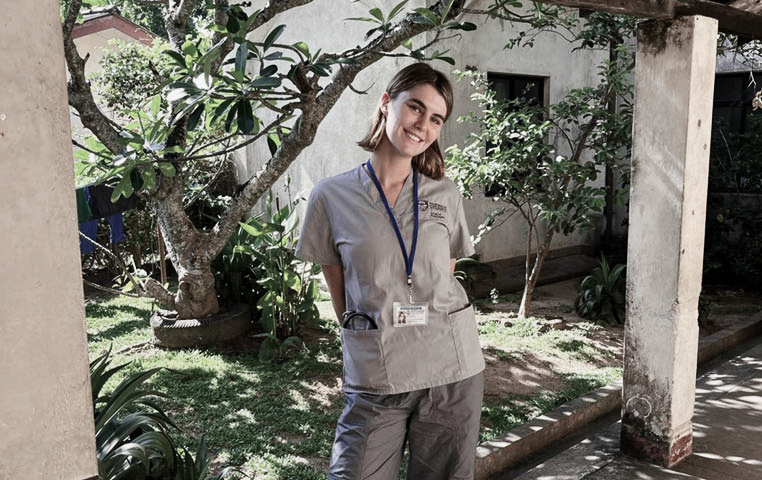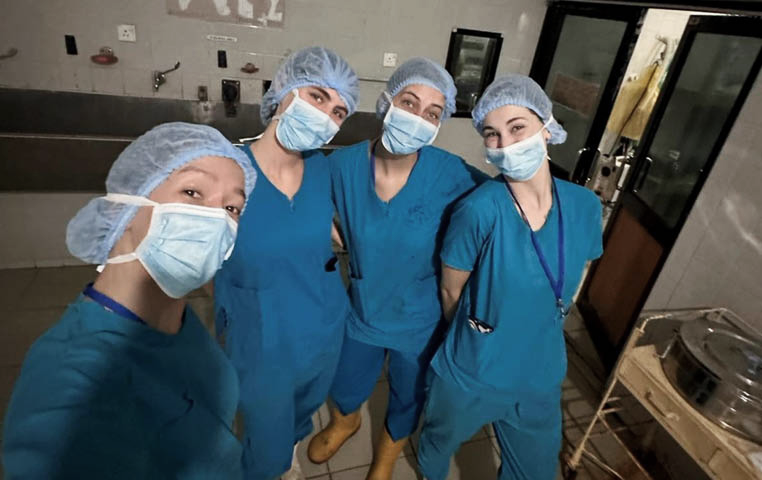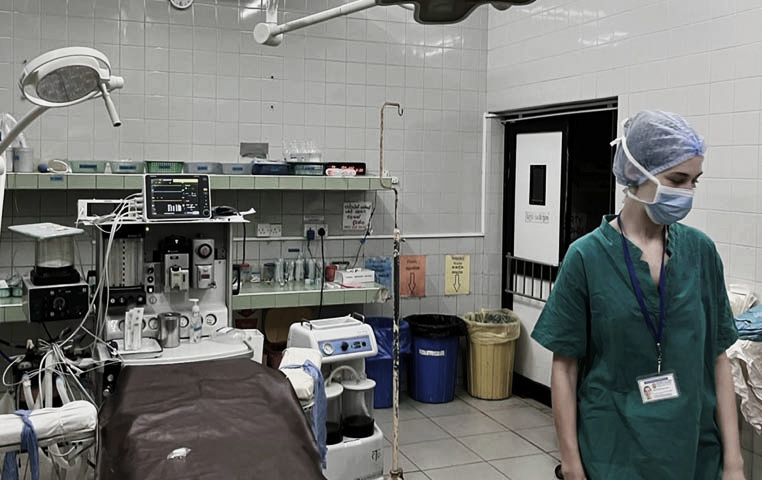Future Focus: Kara Harris
Final year medical student Kara Harris, who recently completed her elective in Galle, Sri Lanka, returns with a newfound perspective on the intersection of socio-political dynamics and healthcare.
With a passion for women’s health, Kara embarked on a four-week elective in the obstetrics and gynaecology department. Immersed in the local community, she witnessed first-hand the profound impact of socio-political dynamics on health outcomes. Through this experience, Kara gained invaluable insights into the intricate complexities of addressing healthcare disparities.
A bit of history
My elective took place in the obstetrics and gynaecology department in a public hospital in Galle, a coastal city in the south-west of Sri Lanka. Sri Lanka is a beautiful country with a complex political and social history. Since the 14th century, Sri Lanka has been colonised by the Portuguese, Dutch and British. After British departure, Sri Lanka experienced a devastating civil war between the years of 1983 to 2009, which left over one million Sri Lankans dead. Subsequently, the country has experienced massive inflation, announcing bankruptcy in April of 2022.
Obstetrics and gynaecology
I chose Sri Lanka for my elective because I was interested to see how the Sri Lankan socio-political climate shapes health issues experienced and the care received. I specifically chose for my elective to take place in the obstetrics and gynaecology department because I have a strong interest in women’s health. Particularly in nations that are part of the global majority, women’s healthcare often faces significant barriers to improvement, and like other marginalised groups, is often the first to suffer in times of crisis. I aimed to compare my experience of Australian obstetrics and gynaecology services to those in nations that are part of the global majority.
 The structure of obstetric care is much like the one we have in Australia, with antenatal and postnatal services delivered by a mix of nurses, doctors and midwives. The investigations, imaging and management plans are essentially identical to those in Australia, however the ease of attaining these services is limited by availability and financial constraints. The obstetric issues faced by patients were similar to those in Australia including things like preeclampsia, gestational diabetes and infection. The common pathologies I observed were reflective of the economic difficulties faced by poorer people in the country, namely malnutrition, iron deficiency, anaemia and fetal growth restriction. These were normal presentations on the ward. Vaginal delivery was prioritised for appropriate patients and almost always entailed episiotomies for nulliparous women. During my time there, I also never witnessed an epidural being administered. If necessary, women received caesareans for medical indications including breech positioning and multiple pregnancies, however elective caesareans based on patient preference were not offered due to a lack of resources. Contraception options were not discussed as openly as in an Australian setting, but were essentially the same - with most Sri Lankans relying on barrier methods due to cost-effectiveness. Most of the medicine that I saw in obstetrics and gynaecology in Sri Lanka is the same as in Australia; however, practice in Sri Lanka was influenced by availability of human and medical resources.
The structure of obstetric care is much like the one we have in Australia, with antenatal and postnatal services delivered by a mix of nurses, doctors and midwives. The investigations, imaging and management plans are essentially identical to those in Australia, however the ease of attaining these services is limited by availability and financial constraints. The obstetric issues faced by patients were similar to those in Australia including things like preeclampsia, gestational diabetes and infection. The common pathologies I observed were reflective of the economic difficulties faced by poorer people in the country, namely malnutrition, iron deficiency, anaemia and fetal growth restriction. These were normal presentations on the ward. Vaginal delivery was prioritised for appropriate patients and almost always entailed episiotomies for nulliparous women. During my time there, I also never witnessed an epidural being administered. If necessary, women received caesareans for medical indications including breech positioning and multiple pregnancies, however elective caesareans based on patient preference were not offered due to a lack of resources. Contraception options were not discussed as openly as in an Australian setting, but were essentially the same - with most Sri Lankans relying on barrier methods due to cost-effectiveness. Most of the medicine that I saw in obstetrics and gynaecology in Sri Lanka is the same as in Australia; however, practice in Sri Lanka was influenced by availability of human and medical resources.
Commitment and dedication
My time in Galle was inspiring and at times very challenging. As our elective coordinator said, ‘This is not about learning medicine, this is about learning how we deliver medicine in a low-resource setting’. My time in Sri Lanka affirmed my belief that Australia has one of the best healthcare systems in the world, but that is not to say that lower-to-middle income countries do not provide good care. It was an obvious source of national pride that, despite the collapse of Sri Lanka’s economy and decades of political corruption, they had maintained an excellent health service - free to all. The level of understanding and expertise the consultants had was world class. Without the ability to rely on investigations or imaging, physicians showed judgement and clinical skills that many consider a dying art (i.e. the Pinard). I also feel that the sheer hours Sri Lankan doctors work throughout their career make them amazing doctors. Being a junior doctor in Australia is no walk in the park, but I truly believe the Sri Lankan JMO was on the ward every waking hour of the day. What the Sri Lankan medical system lacks in resources, they make up for in expertise and dedication.
Gender equity imbalance
The role Sri Lankan women played in their own care differed significantly to what I have observed in Australian hospitals. During my time in Sri Lanka, I had many Tuk Tuk drivers tell me that doctors ‘are like gods’, and this is exactly how doctors are perceived and treated in Sri Lankan hospitals. I found that many patients did not actually know why they were admitted to hospital, and in my experience, rarely had an active role in their own decision making. This contrasts heavily to the Australian model of ‘patient centred care’. I am reluctant to say that the Sri Lankan approach is wrong, it is just different. Obstetric care in Sri Lanka seemed to me to be very reflective of women’s standing in society. Although Sri Lanka has historically exhibited higher gender equality levels compared to neighbouring nations, recent years have experienced a notable deterioration in gender equity indicators. Girls have higher enrolment and retention levels in secondary education and perform better on public examinations. Similarly, females represent larger proportions of university students when compared to males. Despite educational attainments of women, Sri Lanka has a low female labour force with a participation rate of 33% and are underrepresented in leadership positions.
Unsurprisingly, only one of the consultants at the maternity hospital was a woman. Sri Lankan students explained that this was exceptional and that not many women entered O&G due to the demands of the profession and the need to uphold domestic and child-rearing responsibilities. A study from 2020 indicated that 94% of O&G consultants in Sri Lanka were male, with little rise in female participation rates in the past 20 years, despite over 60% of medical students being female. This contrasts to the Australian healthcare system where 83% of trainees and 50% of RANZCOG fellows are female. For a country with such high levels of female education, it feels a waste to have so few participate in women’s health. Increased representation of women in this specialty could create obstetric care that better reflects the needs and desires of women.
Patriarchal traditions
Despite the quality of healthcare training and expertise in Sri Lanka, I feel a lot of their obstetric care was rooted in patriarchal tradition rather than scientific evidence. Women all received enemas prior to delivery, all had their pubic hair shaved prior to birth and none could give birth in positions other than on their back. Partners were never present in the delivery suite. I was quite taken aback when I saw a patient’s issue list state; ‘1. Foetal Growth Restriction, 2. Unmarried’. This is a factor that obviously has no medical impact but potentially a significant psychosocial one. At times I felt gender norms superseded evidence-based care and this was quite saddening. A lot of these practices seemed similar to how Australia was with obstetrics and gynaecology in the 1960s. Despite the progression we’ve seen in past decades, it’s important to remember that there is still much to be done to achieve gender equality in healthcare, workplaces and society generally, not only in Australia but perhaps more pertinently in lower-to-middle income countries. I feel my time in Sri Lanka reminded me that women deserve more, and that women’s healthcare is a powerful tool to instigate change.
 Facebook
Facebook
Like and follow us on Facebook to keep up to date with all our student offers, events, competitions and more.